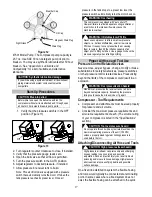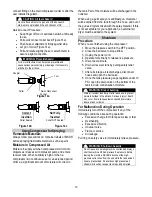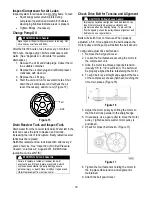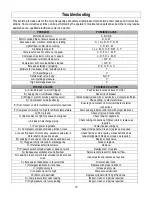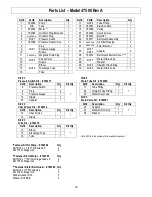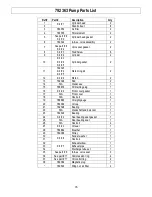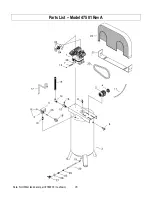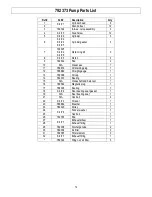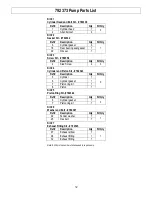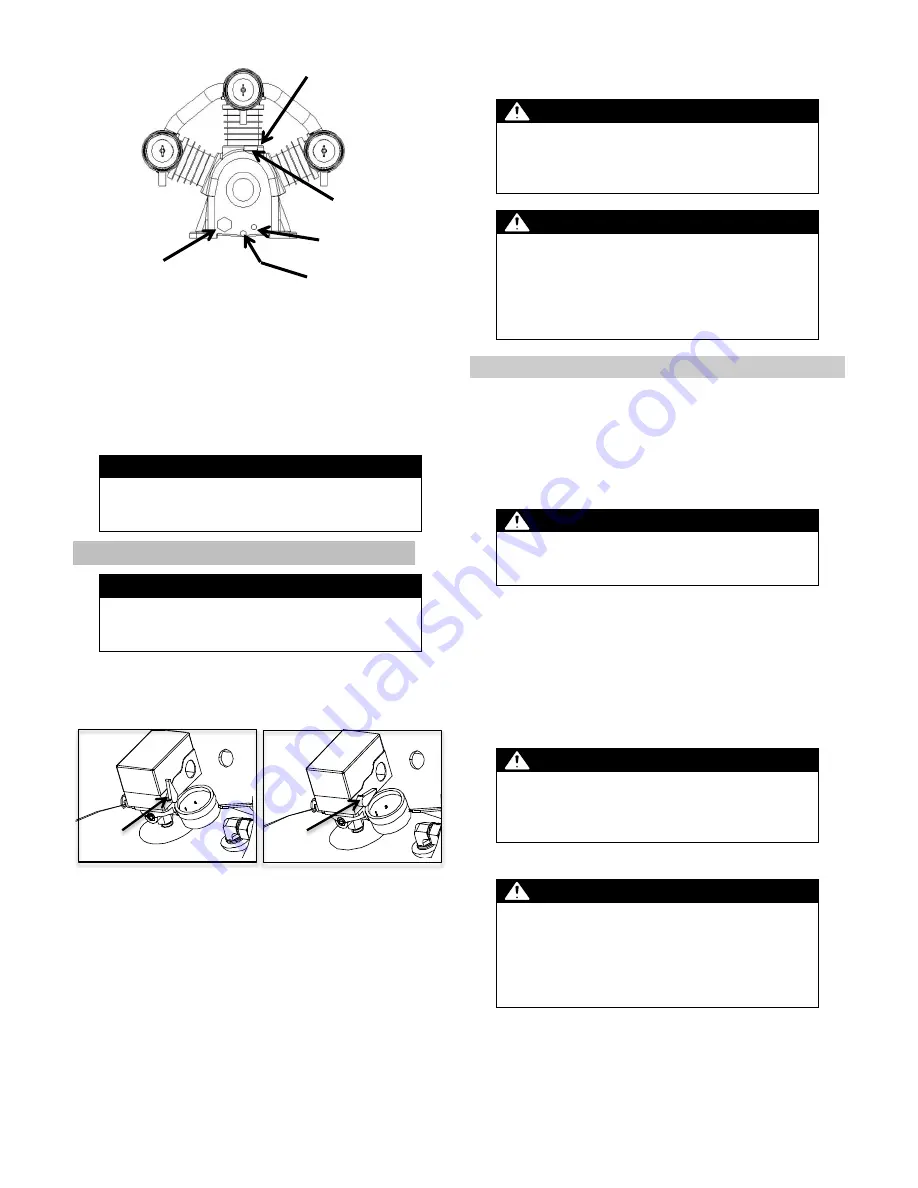
17
Figure 12
47501 Model Pump: The compressor pump capacity is
23.7 oz. Use SAE 30 non-detergent pump oil prior to
break-in. You may use synthetic lubricants after 50 hour
break-in. See “
Appendix A: Lubricants and
Compatibility
” for a list of suitable and alternative
lubricants.
CAUTION: Synthetic lubrication damage
If you will be using a synthetic lubricant, all downstream
piping material and system components must be
compatible.
Start-Up Procedures
CAUTION: Break-in period
Before initial use, open the ball valve and run the
compressor without air tools attached and through open
air line for 30 minutes to break-in pump parts.
1.
Verify that the pressure switch is in the OFF
position. (Figure 13)
Figure 13
2. Turn regulator counter clockwise to close, if installed.
3. Verify that the pressure gauge reads zero.
4. Open the ball valve so that air flow is permitted.
5. Turn the pressure switch to the AUTO position.
6. Adjust regulator to desired pressure, if installed.
7. Allow pressure in receiver tank to build.
Note: This electric model is equipped with a pressure
switch that automatically turns the motor off when the
tank pressure reaches its preset level. Once air
pressure in the tank drops to a preset low level, the
pressure switch automatically turns the motor back on.
WARNING: Overheating
This compressor is equipped with “auto shut off”.
However, failure to allow adequate cooling ventilation or
a restriction in the intake airflow may cause the
machine to overheat.
WARNING: Inflatables/Low PSI tire
Never use compressor to inflate small low-pressure
objects, i.e., balloons/inflatables, small or low volume
PSI tires. It is easy to over-pressurize them, causing
them to rupture. Identify the inflation capacity of an
object prior to filling it with air. Use a gauge to check the
pressure regularly when inflating anything.
Proper Air Hose and Tool Use
Pressure Control Related Devices
Never remove, adjust, bypass, change, modify or make
substitutions for safety/relief valves, pressure switches
or other pressure control related devices. Pressurizing
beyond the limits of the compressor could result in an
explosion.
WARNING: Overpressurization hazard
NEVER over-pressurize the receiver tank or air tools
beyond nameplate capacity. Exceeding the pressure
rating could cause them to explode or fly apart.
Compressor - Tool Requirements
Compressor and attachments must be sized properly
for pressure and air volume.
Consider the maximum pressure requirements and
air volume requirements of each. (The volume rating
of your compressor is listed in the “
Specifications
”
section.)
CAUTION: Tool overpressure hazard
Do not operate this unit with any tool rated less than the
maximum operating pressure of the unit (150 PSI)
unless a properly sized regulator limiting pressure is
used before the tool.
Attaching/Disconnecting Air Hose and Tools
CAUTION: High pressure stream hazard
High-pressure air stream can pierce skin and underlying
tissues, leading to serious injury and possible
amputation. Such an injection injury can result in blood
poisoning and/or severe tissue damage. High-pressure
air stream can also cause flying debris and possible
surface damage.
On a fixed line distribution system the flexible hosing
and tools would typically be connected at a terminating
point. In some cases where a fixed system does not
exist, the flexible hosing can be attached to the quick
Magnetic Drain Plug
Drain Plug
Oil Cap
Breather Cap
Sight Glass
On
Off
Summary of Contents for 47500
Page 23: ...23 Parts List Model 47500 Rev A Note NorthStar tank decal part 789000 no shown ...
Page 25: ...25 792363 Pump Exploded View ...
Page 28: ...28 Parts List Model 47501 Rev A Note NorthStar tank decal part 789000 no shown ...
Page 30: ...30 792373 Pump Parts List Wing nut for 30 not shown ...
Page 35: ...35 Assembled by Northern Tool Equipment Company Inc Burnsville MN 55306 NorthernTool com ...















